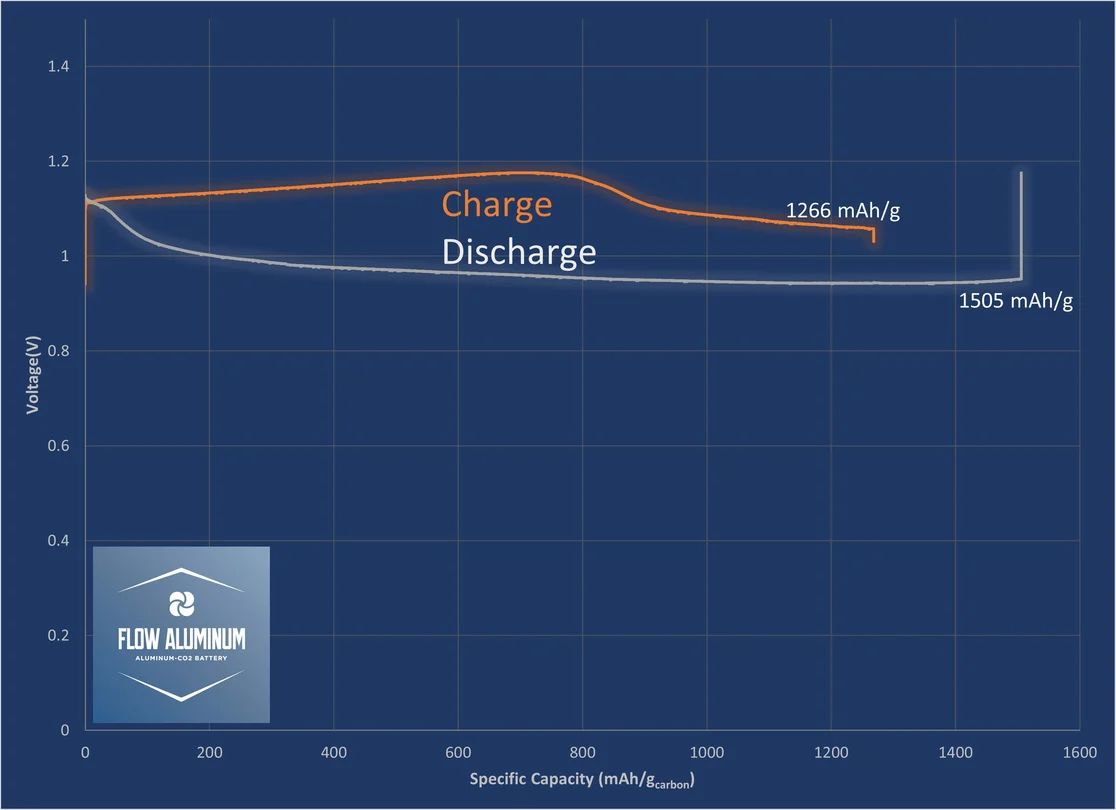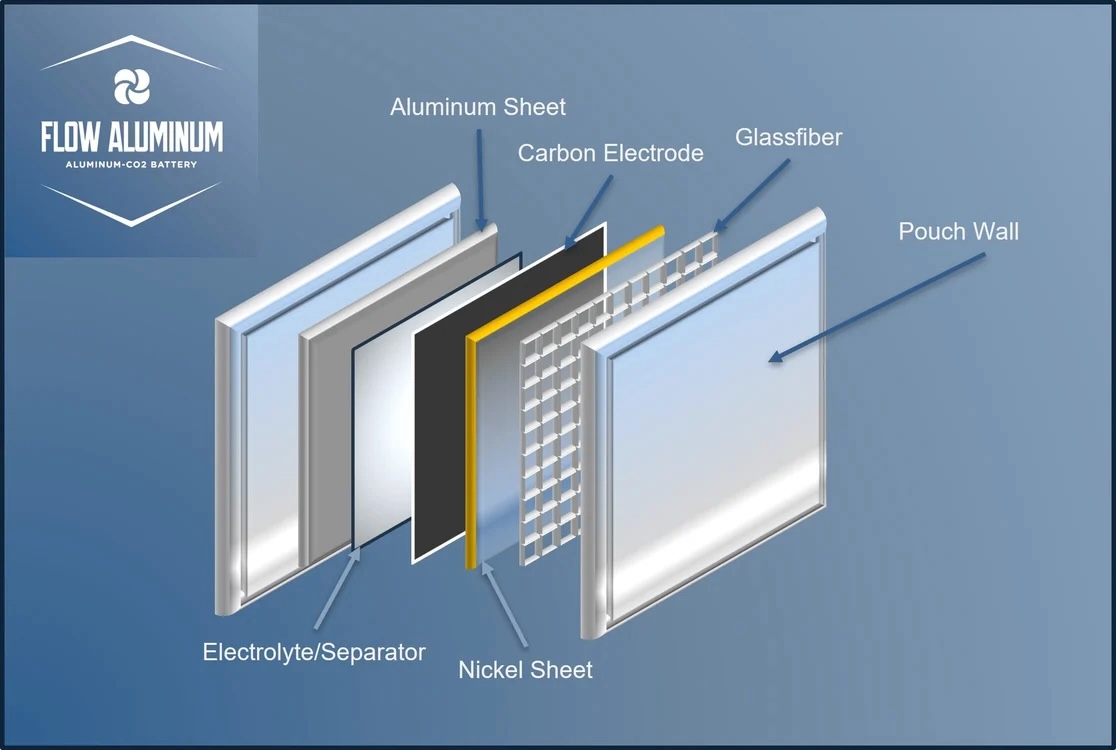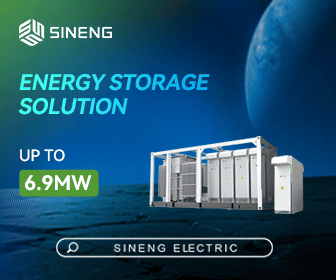Flow Aluminum Announces Marked Advancement in Aluminum-CO2 Battery Technology
Flow Aluminum, an Albuquerque-based startup innovating the energy sector with its groundbreaking aluminum-CO2 battery technology, today announced a significant milestone in its development efforts. The company completed a critical testing phase at the prestigious Battery Innovation Center (BIC), where substantial strides were made in validating its aluminum-CO2 battery chemistry within a commercially relevant cell architecture.
Flow Aluminum achieved these results after a series of experiments at BIC confirmed the battery chemistry’s viability in conditions that closely simulate real-world commercial applications. This breakthrough not only brings Flow Aluminum one step closer to full-scale commercialization but also underscores the untapped potential of its aluminum-based battery technology to serve as a high-performance, low-cost, energy-dense alternative to conventional lithium-ion batteries.
"The progress we've made at the Battery Innovation Center is a significant step forward for Flow Aluminum," commented company CEO Thomas Chepucavage. "Thanks to our CTO, Dr. Olaf Conrad, our team, and BIC, we now have a clear path to refine and optimize our technology roadmap, bringing us closer to delivering an aluminum battery that will innovate energy storage applications.”

Twelve experiments in total were conducted at BIC. During the final four experiments, incremental improvements were made to the original pouch cell architecture and the assembly procedure to account for the differences between standard pouch cell chemistry and the specifics of Flow Aluminum’s Al-CO2 chemistry. These improvements demonstrated a full discharge and half charge cycle in the pouch cell configuration, confirming the battery chemistry in commercially relevant cell architecture and clarifying how to design the electrodes for a metal-gas battery. It also confirmed model assumptions regarding the volumetric storage capacity of key battery components, which validate the modeled battery size and capacity for the start-up’s technical product development plan.
Brett Allen, a Battery Engineer at BIC, expressed his excitement about these results, noting, “The Aluminum-CO2 single-layer pouch cell can attain an experimental specific discharge capacity of ~1500 mAh/g_carbon with a stable voltage curve, which is staggering compared against the theoretical capacities of other battery chemistries actively being developed, such as lithium-ion, sodium, or potassium."

The experimental setup at BIC involved assembling single-layer pouch (SLP) cells with precise dimensions designed to test performance under a range of conditions. Each SLP cell was constructed in a dry room environment, featuring an aluminum anode, a cathode, a separator, and nickel foam. Following assembly, the cells underwent a series of tests that included assessments across various voltage ranges, charging and discharging rates, and soak times. The breakthroughs achieved in the final four experiments provided critical insights, confirming the battery chemistry in a commercially relevant cell architecture and paving the way for further development and optimization.
“We’ve reached a pivotal moment in our development journey,” added Dr. Olaf Conrad, Flow Aluminum’s Chief Technology Officer. “Now, our team will continue to define Flow Aluminum’s technology roadmap in our dedicated laboratory designed to advance our metal-gas battery. Most importantly, we’ve created a testing system that mirrors the architecture of our battery, ensuring that all electrochemical tests are directly relevant to the final cell design. This approach will allow us to streamline development and accelerate our path to commercialization.”
Previously, Flow Aluminum’s battery chemistry had been developed and demonstrated at the University of New Mexico. The experimental setup published by Chris Fetrow, Flow Aluminum’s Chief Scientist, focused on studying battery chemistry, where influences on the cell architecture are minimized and well-controlled. In contrast, the testing at BIC, done via a pouch cell format, sought to optimize techno-economic parameters such as capacity, cycle stability, rate capability, and safety in a commercial cell architecture. Now, alongside Fetrow, Dr. Conrad will lead a team of two senior scientists to oversee a test system that directly translates into the architecture of the start-up’s gas battery.
The testing results from BIC are one of many exciting developments from Flow Aluminum in recent months. This summer, the company welcomed Dr. Conrad to helm its technical team and develop the company’s technology roadmap and it was featured as one of five energy storage startups to watch in Net Zero Insights. In May, it was awarded a grant through the Advanced Energy Awards Pilot Program, administered through the New Mexico Economic Development Department’s Office of Strategy, Science and Technology (OSST).
Flow Aluminum | https://www.flowaluminum.com/









